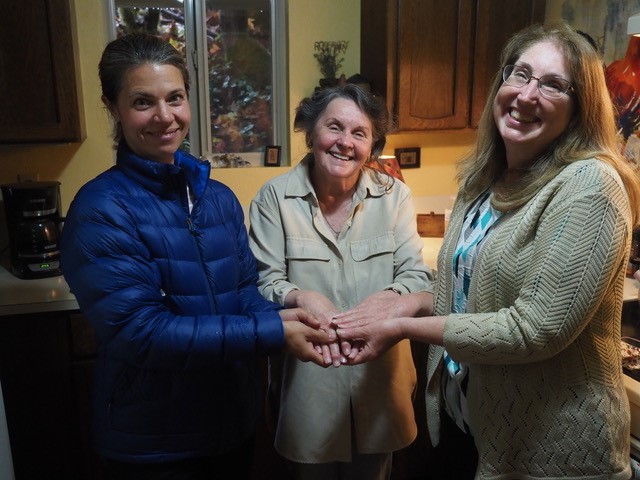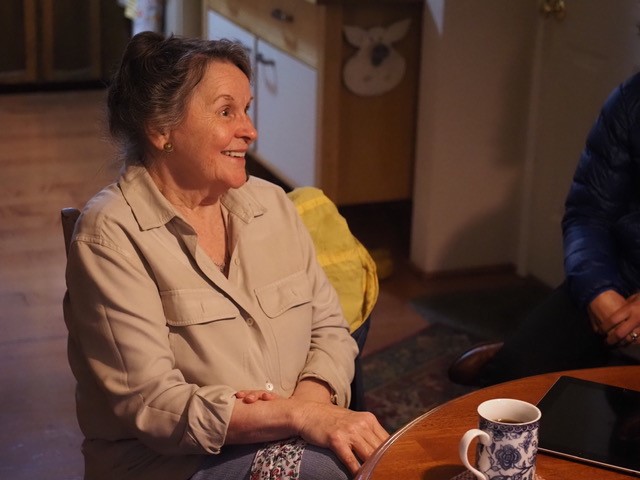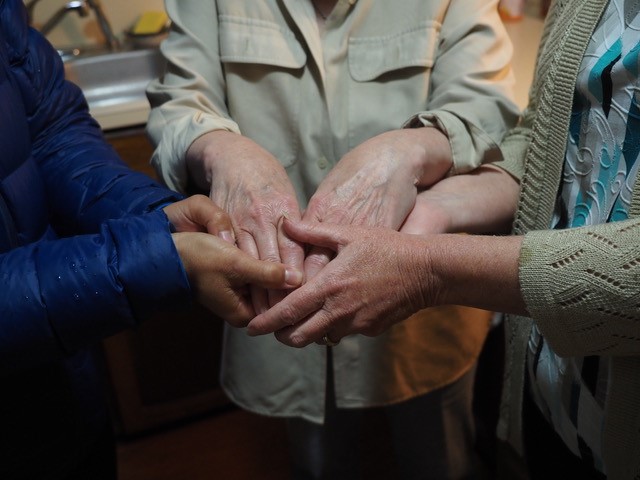
Amanda Christofferson, Vicki Steiner, Leanne Smith
By Erica Bauermeister.
Vicki Steiner calls it “serendipity cottage,” a sweet little house accessible only by a wooden bridge suspended some fifteen feet above a creek. In the winter, the water rushes by on its way to Hood Canal. When Vicki first saw the house sixteen years ago, she was visiting from Pennsylvania. She’d lost her husband to a car accident, her children were grown, and she was burnt out from years as a mental health counselor. One look at the house, set in the hills near Brinnon, and Vicki said “I want to live there.”
As luck would have it, the house was for sale and Vicki quickly become an integral part of the community. She volunteered at the Habitat for Humanity store in Quilcene, among a group of “precious and dear” people she considered family. Then she discovered that her second-floor deck was rotting and water was leaking into the wall of her house. The cost of the fix was prohibitive, but the manager at the Habitat store suggested she contact the Habitat for Humanity Repairs Program which helps people in need repair their homes and stay there.
The Repairs program has been in place for ten years, during which time they’ve done 35 projects—everything from plumbing and electrical to paint, siding, and roof replacement. Habitat said they could help Vicki with her deck, but repairing it required a permit which triggered a septic inspection, which Vicki’s system failed spectacularly. It was an old tank made from cinder block, built in 1970 before designs were regulated. The mortar between the blocks had disintegrated, leaving the contents oozing out. Before any deck work could be done, the septic system had to be replaced. Vicki’s house is set on a ravine, however, and there was no space for a new drain field. There was a solution, but it would cost 42K. If it wasn’t done, Vicki’s house would not be livable..
That’s when things got creative and the proverbial village came together. The Habitat Repair program had never done a septic system before, but the local Environmental Health department had just started the Cost Share Program for Septic System Repair, which grants up to 20K for people in need of a repair or even full replacement of their septic systems within 500 feet of the shoreline or a stream that runs directly into it. Vicki was their first recipient. Amanda Christofferson, who runs the program, also helped connect Vicki with Craft3, which provides low-interest loans specifically for septic systems. Habitat came through with the rest, and became the manager for the project. Terrapin Architecture offered discounted septic design work, Infiltrator donated the tanks, and Shold Excavating gave the project an extraordinary amount of time and attention. And Vicki’s son, Tim, who lives next door, gave his mother an easement to build the drain field on his land. He also offered her a place to shower and do her laundry for the more than two years it took to complete the project during a pandemic.
In early September, 2021, Vicki was finally able to take a shower in her own home again. She glows as she talks about it, sitting in her cozy house, the rain starting to fill the creek outside. Her house is operational, the creek is safe, and now, finally, they can get started on the deck.

Vicki Steiner

Amanda Christofferson, Vicki Steiner, Leanne Smith

